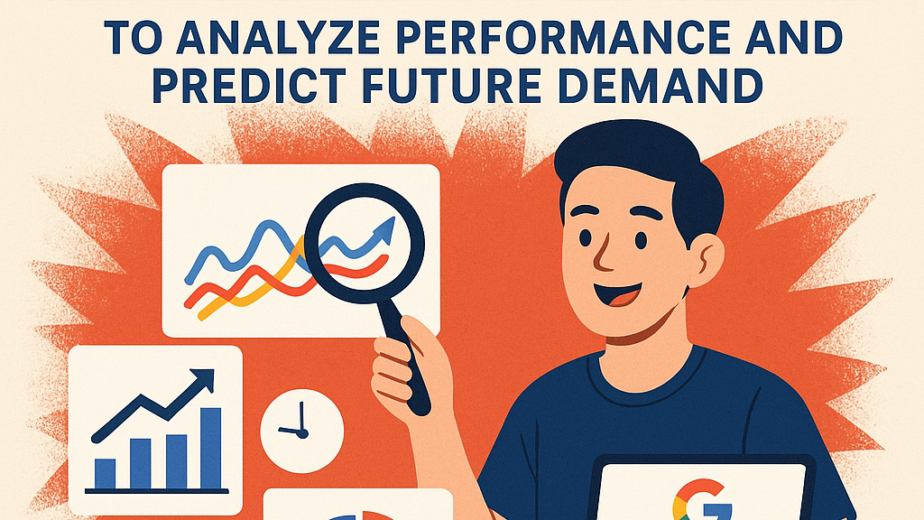In today’s fast-paced digital world, general marketing just doesn’t cut it anymore. Casting a wide net and hoping for results might have worked in the past, but today’s consumers expect more—more personalization, more relevance, and more value. That’s where targeted marketing strategies come into play.
Targeted marketing is the key to delivering the right message, to the right audience, at the right time. By understanding your audience segments and crafting strategies that resonate with their specific needs and behaviors, you can maximize ROI, improve customer engagement, and build stronger brand loyalty.
In this blog post, we’ll explore the ins and outs of targeted marketing strategies—what they are, why they work, and most importantly, how to implement them effectively. Whether you’re a startup, a small business, or an established brand looking to refine your approach, this comprehensive guide will help you boost your marketing results.
1. What Are Targeted Marketing Strategies?
Targeted marketing strategies involve tailoring your campaigns to specific audience segments based on characteristics like:
Demographics (age, gender, income)
Psychographics (interests, values)
Behavior (purchase history, engagement levels)
Location
Funnel stage (awareness, consideration, decision)
Instead of creating one-size-fits-all messaging, marketers develop customized content and outreach strategies that directly address the pain points and motivations of each segment.
The goal? To create meaningful, relevant experiences that drive action.

2. Why Targeted Marketing Outperforms General Campaigns
Let’s face it: marketing budgets aren’t infinite. When you invest in targeted strategies, you make every dollar work harder. Here’s why:
Higher Conversion Rates: Tailored messages resonate more, leading to better click-throughs and conversions.
Lower Acquisition Costs: When you’re reaching the right people, you spend less to achieve results.
Better Customer Experience: Personalized interactions build trust and loyalty.
Improved Retention: Happy, engaged customers stick around longer and are more likely to become repeat buyers.
In fact, according to HubSpot, marketers who personalize content see up to 20% more sales opportunities than those who don’t.
3. Key Components of a Targeted Marketing Strategy
Effective targeting isn’t just about sending different emails to different people. It’s a holistic approach that includes:
Audience Segmentation
Data Collection and Analytics
Personalized Messaging
Omnichannel Integration
Performance Measurement and Iteration
Let’s break these down.
Audience Segmentation
Divide your audience into meaningful groups. Segments can be based on demographics, behavior, geography, or purchase history.
Data Collection
Use tools like Google Analytics, CRM platforms, and social insights to understand who your customers are and what they need.
Personalization
Adapt your messaging, offers, and visuals based on the preferences of each segment.
Omnichannel Consistency
Ensure your targeted messages are consistent across email, social, ads, website, and mobile.
Iteration
Analyze campaign performance, gather insights, and optimize continuously.
4. How to Identify and Segment Your Audience
You can’t target effectively if you don’t understand your audience. Here’s how to build strong, actionable segments:
1. Collect the Right Data
Start with what you know. Use:
CRM data
Website analytics
Purchase history
Email open and click-through rates
Social media behavior
2. Create Buyer Personas
Craft detailed profiles of your ideal customers, including:
Name and photo (for internal use)
Background
Goals
Pain points
Preferred communication channels
3. Use Behavioral and Psychographic Insights
For example:
A user who frequently visits your blog may be in the research phase.
Someone who abandoned a cart is close to purchasing.
Use this data to send the right message at the right time.
5. Personalization: The Secret Weapon
Personalization goes beyond using someone’s first name in an email. It means:
Recommending products based on past purchases
Sending content based on browsing history
Adjusting messaging to reflect local events or weather
Examples:
Spotify’s Wrapped campaign personalizes content based on listening history.
Amazon suggests products based on previous behavior.
According to Epsilon, 80% of consumers are more likely to buy from brands that offer personalized experiences.
6. Real-World Examples of Targeted Strategies in Action
Let’s look at a few brands that nailed it.
Netflix
Netflix uses behavioral data to recommend shows and even personalizes thumbnails based on what you watch. That’s micro-targeting at scale.
Nike
Through its mobile app, Nike delivers personalized training content, product recommendations, and exclusive offers based on fitness goals and purchase history.
Airbnb
Airbnb uses dynamic email content to suggest travel destinations based on past trips and user preferences—boosting engagement significantly.
7. Tools and Platforms to Power Your Targeting
Here are some of the best tools that make targeting easier and more effective:
1. CRM Software (HubSpot, Salesforce)
Store and segment customer data, track interactions, and automate outreach.
2. Email Marketing Tools (Klaviyo, Mailchimp)
Deliver personalized campaigns based on user behavior and segmentation.
3. Analytics Platforms (Google Analytics, Hotjar)
Track user journeys and uncover opportunities for targeting.
4. Social Media Ads (Meta Ads, LinkedIn Ads)
Use interest-based targeting, lookalike audiences, and retargeting.
5. Marketing Automation (ActiveCampaign, Marketo)
Trigger customized workflows based on behavior, time, or location.
8. Common Mistakes and How to Avoid Them
Even seasoned marketers slip up. Watch out for these:
1. Over-Segmentation
Too many segments can dilute your message and overwhelm your team.
2. Ignoring Data Privacy
With GDPR and other regulations, always get proper consent and be transparent.
3. Not Testing Enough
Assumptions can kill campaigns. A/B test subject lines, creatives, and calls to action.
4. Using Static Personas
Your audience evolves. So should your segmentation and messaging.
9. Measuring the Success of Targeted Campaigns
To know if your targeted strategies are working, track:
Conversion rates by segment
Click-through and open rates
Customer lifetime value
Engagement metrics (time on site, bounce rate)
ROI per campaign or channel
Use these insights to refine and improve future campaigns.
Pro tip: Set clear KPIs before launching your strategy so you can measure what matters.
10. Final Thoughts: Make Your Marketing Count
The marketing landscape is more crowded than ever. If you want to stand out, you can’t afford to be generic. Targeted marketing strategies allow you to cut through the noise, connect with your audience on a deeper level, and drive meaningful business results.
By embracing segmentation, personalization, and data-driven tactics, you’ll create campaigns that don’t just reach people—they resonate with them. And in a world full of distractions, relevance is your biggest competitive edge.
So take the time to understand your audience, craft tailored messaging, and optimize with intention. The results? Stronger engagement, better conversion rates, and a marketing strategy that actually works.




2 Comments
John Doe
Fusce efficitur scelerisque lectus nec luctus. Integer tincidunt, elit non pharetra cursus, est purus luctus ipsum, nec commodo tellus ipsum eu mauris.
John Doe
Mauris maximus leo vel erat egestas lacinia sit amet eget est.
Comments are closed.